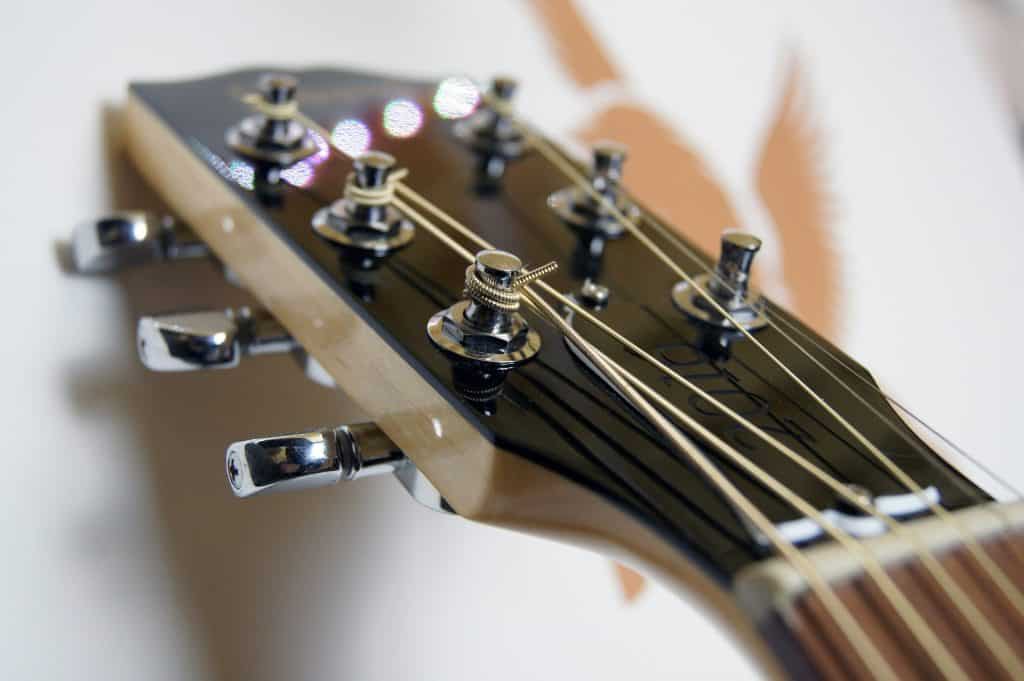Everyone loves the enchanting sound of the guitar, but very few know how to produce it correctly. For beginners, it can be challenging to understand the technical terms of an acoustic guitar. If you are a new guitar player and looking for how to play acoustic guitar perfectly, you have landed at the right place. In this comprehensive article, we are going to share a detailed guide on how to play an acoustic guitar.
How to Play an Acoustic Guitar – The Beginner’s Guide
The Best Guitar Posture – Does it Really Matter?
It can be crucial to find the best acoustic guitar, but it is equally important to know about the best posture for playing acoustic guitars. The posture of a player is vital to enhance your guitar performance. If you are unable to maintain the right posture, it may affect your performance. Let us take a look at the do’s and don’t’s of a posture for acoustic guitar players.
Avoid Sitting on Low Sofa
Sitting on a low sofa not only makes guitar playing tough but also stains your backbone. The posture can be a real disaster if you are using a large body dreadnought acoustic guitar. So, it is highly recommended to avoid sitting on a low sofa when playing acoustic guitar.
Arm Chair is your Enemy
Though an armchair is commonly considered as a comfortable sitting option but the type of chair makes it uncomfortable to play the acoustic guitar freely. When playing your guitar, make sure that the left arm is free from all kinds of obstacles.
Avoid High Stools
If you have chosen a high stool for sitting, it is wise to replace it. Low stools are best for guitar players, whereas high stools may affect your performance because maintaining balance on such high stools while playing guitar is a challenging task. When a player sits on a high stool, his thighs create a downward slope. This posture may encourage the guitar to slip away and affect your performance.
What Is The Best Sitting Posture For Acoustic Guitar Players?
Well, find the best posture for guitar playing is straightforward. All you need is to find a seat that offers obstacles free arms with 90 degree angled knees. Just consider these two things, and you will enjoy the best sitting posture for playing an acoustic guitar.
How to Play Acoustic Guitar – The Crucial Guitar Anatomy
Acoustic guitar lessons for beginners may start with simple things. Gathering too much information about the guitar may confuse you. However, it is essential to have sufficient knowledge to start things off. Here are some critical parts that will surely help you to understand the acoustic guitar basics.
The FretBoard
This is the part of the guitar where the player’s fingers lend the magic and create a soothing sound. You can play various chords and notes using this fretboard as per your desire and mood. As compared to an electric guitar, an acoustic guitar is relevantly easy to play as you don’t need to care about the amplification settings.
The Bridge
The acoustic guitar strings coming from its top are held in the part which is known as the bridge. Small pegs are used in the acoustic guitars on the deck for fixing the deck and also keep them in the right place.
The Machine Heads
The headstock is another crucial part that every beginner should know. This is the top most aspect of an acoustic guitar where strings are appropriately plugged into various keys. You can tune them when you want to produce desired tones. They are known as Machine Heads and play a vital role in lowering and raising the pitch of every string. These parts help to keep the acoustic guitar in the best condition directly through tuning.
“Note” of the Guitar Strings
Remember, you can’t learn acoustic guitar without knowing about the notes of the strings. It is essential to learn about the name and number of the strings and then about the notes.
The thickest string is known as the 6th string. In typical guitars, the 6th string is tuned to E and provides the lowest guitar sound when played. This is one of the prime reasons why it is called a Low E string.
Another string is the 5th one, which is tuned to A and known as the A string.
Then comes the 4th string, which is tuned to D and call the D string.
The 3rd string is tuned to G and known as the G string.
The 2nd one is tuned to B and therefore referred to as the B string.
The 1st one is also tuned to E. This thinnest string offers high notes. It is commonly known as the high E string.
To understand the acoustic guitar beginning, you must know about the numbers and string tunings, it becomes easier for you to understand the playing mechanisms.
Remembering the String Names and Notes
Though some players may find it hard to remember the string names but this mnemonic will help to learn the pattern quickly.
- Eddie
- Ate
- Dynamite
- Good
- Bye
- Eddie
- Here is another interesting one.
- Elephants
- And
- Donkeys
- Grow
- Big
- Ears
Read More: How to Tune an Acoustic Guitar
The Difference Between Chords and Notes?
Most beginners don’t understand the difference between chords and notes, the same is the case with acoustic guitar chords and notes, and therefore find it challenging to play acoustic guitar.
A note is a single pitch when it is produced when the player struck a single string. Whereas chord is created when the strings are played together, and notes are combined. In simple words, notes create chords, just like the letters combine to form a word.
For beginners, learning notes can be a bit tricky as there are different notes on the fretboard. Don’t waste your energy memorizing the notes and begin by learning the chords. They are straightforward to remember and don’t confuse at all. When you focus on chords, it will help you to understand the notes.
What are Chords?
A group of notes played simultaneously is called a chord. Beginners must learn about the chords. You can play music when you strum two or more notes together.
Notes or Chords, which one is important?
Well, both chords and notes are essential. However, beginners are advised to start with the chords as notes may confuse and challenge a new player.
How to Fret Chords Properly
Most people fail to play the acoustic guitar properly as they use the fingerprint part instead of the fingertips. This is because no one wants to create a messy chord by touching unnecessary fingers. The fingertips will help you to touch each string clearly with proper space to enjoy a clean tone.
Make sure that every note you play must be clear and loud. Always position the fingers in the middle of the fret. It will help the fingers to create an adequate gap between the strings.
Place your thumb in the middle of the neck and point it towards the ceiling. Such a position is an excellent choice for a large number of chords.
Timing Tips
When it comes to playing an acoustic guitar, timing is essential. You cannot play the song or perform in a band if you are not able to maintain a proper time.
Strumming and time are two critical things that must go hand in hand. Each strum to play a chord needs an even gap in between. If these gaps between the strums are uneven, you are going out of time. It will affect your performance seriously.
Conclusion
Playing the best acoustic guitar is not difficult at all but only needs proper learning and understanding. For instance, a guitar player must know the best posture and strumming to play an acoustic guitar. Learn the basic chords and easy songs to improve your learning process. In simple words, you need to focus on the right things and practice them regularly.


